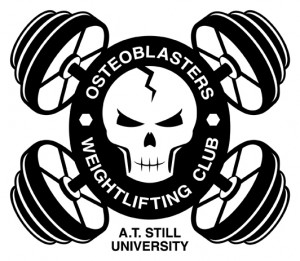National Records for Lifts at Vegas
by Al Myers
I know everyone has to be wondering what the National Records are for the lifts being contested at this years Nationals. I sorted them off and included them in this blog (at the bottom). Four of the five lifts have been contested at several past Nationals, but the Curl – Reverse Grip will be contested for the first time. This means that the top lift in each weight class will be a NEW National Record in that lift!
The One Arm Clean & Jerk has been contested at 6 past Championships (2010, 2008, 2005, 2004, 2002, 1994). The best women’s National Record belongs to Carolyn Goolsby, who at the 2002 Nationals, performed a 1-arm C&J of 66 pounds. The top men’s lift is held by Matthew Doster, who lifted 166 pounds at the same 2002 Nationals in Ambridge. Close behind is Barry Bryan, who lifted 160 pounds at the 1991 Nationals.
The One Arm Hack has been contested 5 times (2005, 2004, 2002, 2001, 1994), and is the 13th most represented lift at the National Championships. The best women’s mark belongs to Amorkor Ollennuking, who at the 2001 Nationals lifted 220 pounds! That is an unbelievable lift! The best men’s record belongs to Frank Ciavattone – who at the 2002 Nationals in Ambridge lifted 402 pounds with his right arm. That great lift is also the best one arm Hack of ALL TIME in the USAWA. That’s one reason why Frank is the GRAND BEST LIFTER in the history of the USAWA – he has put up BIG LIFTS in BIG NATIONAL MEETS!
The Pullover and Press has been contested in three past Nationals (2009, 1998, 1996). The top womens record belongs to Cara Collins, who lifted 77 pounds at the 1998 Championships. The top men’s mark also is held by Frank Ciavattone, who lifted 336 pounds at the 1996 Nationals in Mansfield. I’m close behind with 320 pounds at the 2009 Champs, followed by Chad Ullom at 311 pounds.
The Jefferson Lift has been contested 3 times as well (1994, 1993, 1992). As you can see, it has been several years since this lift has been in a Nationals, so it is nice to see the Jefferson Lift (or Straddle as some call it) has made it’s way back to the big stage. The top womens mark belongs to Jacqueline Caron/Simonsen who lifted 342 pounds in the 1993 Nationals, while the top mens record is held by Bob Hirsh, who lifted 634 pounds at the 1994 Nationals in East Lake. Bob did this huge lifted while lifting in the 75 kilogram class!!! Other top lifts were by Bob Moore (1992) and Frank Ciavattone (1993).
I fully expect to see several National Records to be broken this year. After all now we have an incentive to do so since these National Records will be available to give everyone something “to shoot for”!
NATIONAL RECORDS FOR THE 2012 NATIONAL CHAMPIONSHIPS
